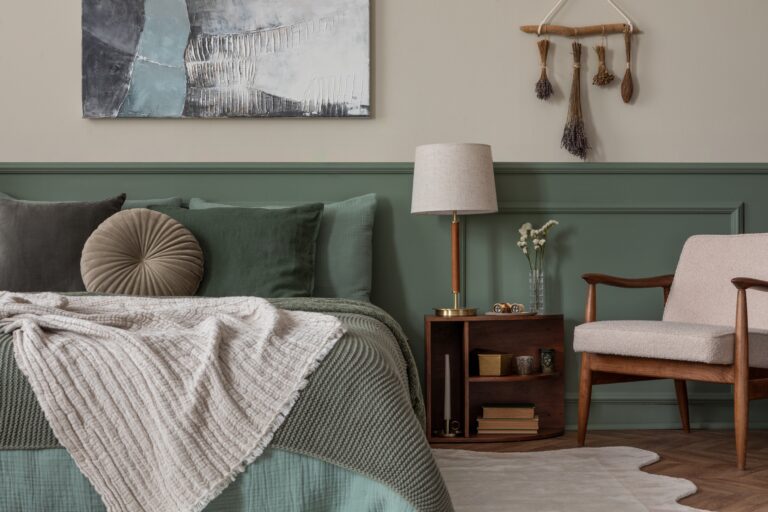When embarking on an interior design project, choosing the perfect paint colour is crucial in creating a cohesive aesthetic that both complements and enhances the architectural features of your space. The interplay of colour and design can transform rooms. Also, highlighting the unique characteristics of your home’s architecture. Here’s how to navigate the colourful journey of selecting a paint shade that sings in harmony with your architectural design.
Understand your Architectural Style
Architecture speaks volumes about a home’s character, and recognizing your architectural style is the first step in picking the right paint palette. A Victorian home might beckon for period-appropriate, rich jeweled tones or pastels, enhancing intricate woodwork and ornate details. Meanwhile, a modern minimalist space with clean lines could lean towards a monochromatic or neutral palette to underline its sleek and simple form.
Consider the Natural Light
Lighting plays a pivotal role in how paint colours are perceived. North-facing rooms might call for warmer tones to counteract cool, indirect light, while south-facing spaces can handle cooler shades due to the abundance of natural sunlight. Take advantage of your architectural design by considering how light enters the space and choose colours that adapt well to these conditions.
Highlight Architectural Features
Select paint colours that accentuate the unique structural elements of your home. For instance, a deep, contrasting colour can bring attention to crown moldings or wainscoting, adding depth and drama. Conversely, if your goal is to make the room feel more expansive, choose a lighter shade that reflects light and subtly blends with the architectural features.

Mind the Material Palette
The materials used in your architectural design should guide your colour choice. A home with exposed wood beams, brick, or natural stone has intrinsic colours that should be echoed in your paint choice to create a sense of continuity. Choose hues that either complement or thoughtfully contrast these elements.
Flow & Transition
Interior colours should not only suit the architectural design but also create a cohesive flow from one room to the next. Consider the sightlines in your home and how colours interact when seen from adjacent spaces. Opt for a colour scheme that transitions smoothly and maintains the integrity of the home’s design language.
Test, Test, Test
Before making a final decision, test your colours. Paint swatches on different walls to observe how they behave throughout the day and night. This trial can unveil surprising undertones and intensity changes that might not be apparent in a small paint chip or under the store’s lighting.
Reflect Personal Style
While staying true to your home’s architecture is essential, introducing your personal style keeps the space feeling authentic and comfortable. Don’t be afraid to inject your personality into the colour scheme. Sometimes, a contrast between the architectural style and contemporary colour choices can create an exciting and unexpected aesthetic.
Picking an interior paint colour is a delicate balance between respecting your home’s architectural integrity and infusing your personal style. With a thoughtful approach to your space’s structure, light, and existing materials, you can choose a colour that not only complements the architectural design but also turns your house into a home. The right colour sets the mood, adds dimension, and ultimately, tells your unique visual story.
Sincerely,
Van Isle Paint
Victoria, BC, and Beyond
(250) 412-3885
For further insights and informative content from Van Isle Paint, please visit our blog: https://vanislepaint.com/blog/




